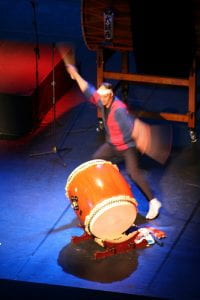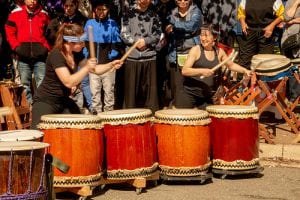Hello all,
Today I will talk about my homestay experience during our Japan Study Tour
On Saturday, May 11, we arrived at Keiai Junior High School where we would meet our host student. Our school has tight bonds with Keiai allowing us to spend a two day cultural exchange. In March, we hosted them and met our pen pals.
Anyway back to the homestay, my host student was Yuuki. After spending a fraction of the School day with him, he took me and Shoh (Yuuki was hosting both me and Shoh) to Kokura Station where we met up with Ridge and Brady, as well as his pen pal. There, they took us to Aruaru City, which was a anime mall. There were a wide assortment to figures, mangas, animes, cosplays, and consoles that made GameStop look like nothing. After shopping for a few hours, we had to attend and perform at a banquet for us arranged by Keiai Junior Highschool, so we trekked to the hotel that hosted the banquet. There, I met me and shoh’s host family. Even though my Japanese wasn’t the best, we were all able to communicate and share laughs.

On Sunday, Yuuki took us to the Fukuoka Science Center where we downloaded a app to make the pictures on display become realistic. When a person gets in the photo, the AR would make the picture a funny animation. An example would be falling off a giant hand. After witnessing all those illusions, they took us to lunch. Because Tonkotsu Ramen is a very popular dish in Fukuoka, they wanted us to try it. Like they described it, the broth was extremely rich and creamy とっても美味しい(very delicious.)

After lunch, we did a lot of much-needed omiyage shopping at Canal City Hakata and Hakata Station! I was able to buy a lot of Fukuoka snacks like menbei (rice crackers.) Shoh and I were even able to play in the arcade! We tried getting plushies from the claw machine but failed :(.
After a full day of exploring and shopping, we went to a Japanese Barbecue restaurant. The food there was really good! After dinner, we played wii games with Yuuki like Mario Kart and Taiko No Tatsujin. Even though I fell in the water multiple times in Mario Kart, we still had a lot of fun.
Overall, I enjoyed the homestay experience a lot. I am grateful for all the fun and memories we did with the family, and I am happy I was somewhat able to communicate in Japanese with them. I am also grateful that we got to experience the area in another point of view and that we can keep










